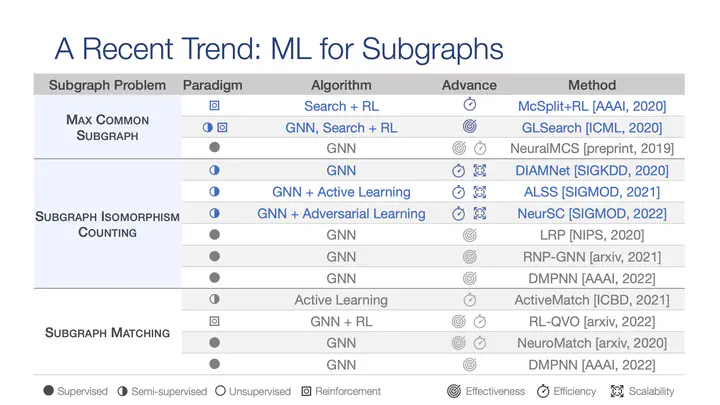A Survey on Machine Learning Solutions for Graph Pattern Extraction

A subgraph is constructed by using a subset of vertices and edges of a given graph. There exist many graph properties that are hereditary for subgraphs. Hence, researchers from different communities have paid a great deal of attention in studying numerous subgraph problems, on top of the ordinary graph problems. Many algorithms are proposed in studying subgraph problems, where one common approach is by extracting the patterns and structures of a given graph. Due to the complex structures of certain types of graphs and to improve overall performances of the existing frameworks, machine learning techniques have recently been employed in dealing with various subgraph problems. In this article, we present a comprehensive review on five well known subgraph problems that have been tackled by using machine learning methods. They are subgraph isomorphism (both counting and matching), maximum common subgraph, community detection and community search problems. We provide an outline of each proposed method, and examine its designs and performances. We also explore non-learning-based algorithms for each problem and a brief discussion is given. We then suggest some promising research directions in this area, hoping that relevant subgraph problems can be tackled by using a similar strategy. Since there is a huge growth in employing machine learning techniques in recent years, we believe that this survey will serve as a good reference point to relevant research communities.